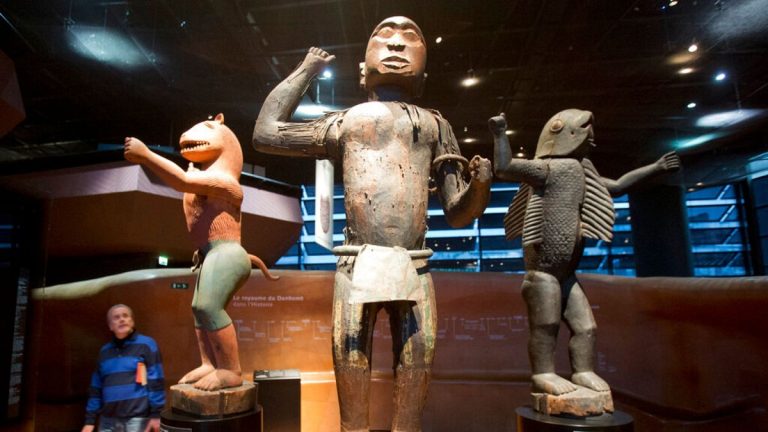The €2.1 million fund will fund research over three years to find out whether African artefacts held in French and German national museums have been fairly acquired.
As the movement to “Decolonizing” museums. In Europe, France and Germany have launched a €2.1 million research fund to investigate the provenance of African cultural artifacts in their national institutions.
The new fund aims to fund research projects focusing on cultural objects from anywhere in sub-Saharan Africa. Priority will be given to former French and German colonies such as Cameroon and Togo (which were colonized by both France and Germany).
Each country will contribute €360,000 annually to the three-year fund, which will operate based on demand for projects.
The French and German Culture Ministries announced this initiative earlier this month. Application forms for eligible projects will be made available online this week until April 30.
The Marc Bloch Center, a Franco-German research center for the social sciences and humanities in Berlin, will manage the disbursement of the funds.
“The first year will be experimental,” said Dr. Julie Ceccia, head of the fund’s scientific project and a researcher at the Marc Bloch Center. “We set as few budget and subject restrictions as possible for eligibility criteria to keep it as open as possible.”
To be eligible for funding, projects must have a German-French institutional team, must have a close relationship with a partner in Africa, and their scope must include both museums and academic research, Sisia said.
“We want to see, from a German-French point of view, how there can be new teams and new styles emerging from this format.” Sisia told Euronews Culture.
This is the first fund dedicated to international cooperation in provenance research, and is a big step towards Europe-wide cooperation on this hot-button issue, Cesia says.
“This initiative shows good and effective cooperation between Germany and France in the cultural field today, and there is also this aspect of the pilot project because the German and French Ministries of Culture are considering opening this cooperation at the European level after the three years. The one-year pilot phase has been completed,” said Sisia. “.
Growing commitment to respond across Europe
Museums across Europe and North America are facing increasing calls to reconsider their approaches to the Indigenous and colonial-era cultural artifacts in their possession.
Recently, the American Museum of Natural History in the United States announced the closure of two major wings displaying Native American objects, after new federal regulations required museums to obtain approval from tribes before displaying or researching their cultural items.
Both France and Germany are working on a framework for the recovery of African artifacts, an issue that has become a new priority for national policymakers.
In France, this push came after a 2017 speech by President Emmanuel Macron, in which he promised to rebuild strained relations with former French colonies in sub-Saharan Africa.
He said the return or loan of African artifacts housed in French cultural institutions would be a “top priority” for his administration.
Macron said: “African heritage cannot be a prisoner of European museums.” In a tweet After his trip to Burkina Faso, Ghana and Ivory Coast.
France It returned 26 artifacts to Benin in 2021But recovery efforts have faltered in recent years after a law to establish a framework for the return of African artifacts faced a deadlock in parliament late last year.
Germany has also made progress on this issue, signing an arms supply agreementDeliver hundreds of artifacts Known as the Benin Bronzes, they were first looted by a British colonial expedition.
Berlin has so far returned about 20 bronzes to Nigeria that were previously displayed in German national museums. Its national collection contains one of the largest numbers of African artifacts in the world.
Sissia said the new Franco-German fund will also allow for new research into the circulation of cultural objects from Africa, shedding light on how objects cross borders through international art dealers and cultural institutions.

